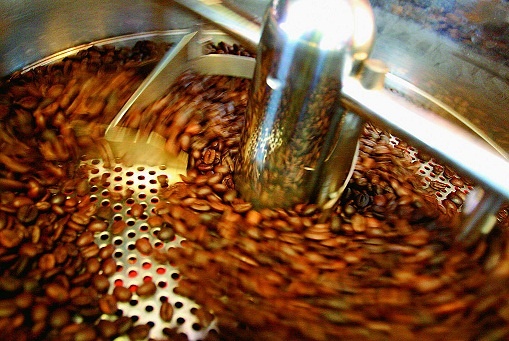Fully master the skills of hand brewing coffee to understand the principle of drip hand brewing of segmented extraction test
It was interesting to see other people doing manual extraction. The experiment was the only criterion for testing the truth, so I came to play it once.
Coffee beans: Yega Snow Coffee Konga
Water temperature: 88 degrees
Grinding: normal hand impact size
Method: hand flushing
The first test:
Did not take a picture, drew a picture to show
Cup test results: the first two cups are sweet, sour and sweet, with fermented aromas; the last two cups are floral and citrus, with distinct layers.
After testing, the first feeling is that the moderate baking products will be easy to melt in water, while the shallow baking products are relatively difficult to melt in water.
The second test:
Test the effect of low ratio of water to powder and lengthening extraction time on segmentation.
Operation: fill it with water just enough to fill a cup, cut off the water, then rest for 60 seconds, then to the next cup, and so on until the fourth cup is finished.
That is, each cup contains water filling and steaming for 60 seconds.
Cup test results: 4 cups are sweet, sweet and sour, fermented aroma, cups 1 and 2 are the strongest, cups 3 and 4 are slightly weaker. The aroma of flowers and fruits is only a little in Cup 4.
This result is very surprised, the last two cups in the first test no longer have the taste of the first two cups, but they appear again in the second test, and the aroma of flowers and fruits is gone.
If there is no problem, it can be summed up like this.
Factors affecting extraction:
Medium baked products-lengthen extraction time
Shallow baking products-increase the ratio of water to powder (the more water, the lower the concentration, the easier the low molecular weight substances in coffee come out)
In order to verify whether it is normal, there is a third test.
The third test:
The method of operation is the same as the second test, the difference is that the large flow begins in cup 3 to increase the amount of water in the filter cup.
Cup test results: sure enough, as expected, Cup 4 showed a bright aroma of flowers and fruits.
It suddenly reminds me of the Japanese hand-punching method. Keep dripping on the dry powder for a long time and then quickly end with a large flow of water.
It may be to use a long time drip to extract the aroma of the back part of the baking as much as possible while not producing the miscellaneous smell in the environment with low water powder ratio, and then extract the flower and fruit fragrance of the front part with a high water powder ratio.
Source:
The blog of coffee man Lu Xiansen
Important Notice :
前街咖啡 FrontStreet Coffee has moved to new addredd:
FrontStreet Coffee Address: 315,Donghua East Road,GuangZhou
Tel:020 38364473
- Prev

Simple understanding of coffee bean roasting and attention should be paid to the preservation conditions so as not to lose the flavor of coffee beans.
The roasting of coffee beans is the process of converting coffee from raw beans to ripe beans, which is generally divided into eight stages: very shallow roasting (LIGHT Roast), shallow roasting (CINNAMON Roast), micro roasting (MEDIUM Roast), medium roasting (HIGH Roast), medium and deep roasting (CITY Roast), deep roasting (FULL-CITY Roast), very deep roasting (FRENCH Roast), and very deep roasting (ITALIAN).
- Next

Brief introduction of 90 ninety plus to gain an in-depth understanding of the cultural development and knowledge of 90 + coffee beans
Recently, when I talked to a lot of people about 90 beans, I found that many people still don't know the naming, classification and grade of 90. In retrospect, when I first came into contact with 90, it took me some time to get a general idea of what the name of 90 was all about. I have to say that from concept to brand management, this is a very special company, but at the same time for the average consumer
Related
- What is the meaning of lactic acid fermentation with coffee bean treatment?
- How to judge the state of foam by sound?
- How does the latte pull out the unicorn pattern? Come to get for a little trick to improve the flower pull!
- Will flower pulling affect the taste of the latte?
- Do you know the history of coffee?
- The difference between honey treatment and sun washing what is raisin honey treatment?
- What kind of milk can a novice use to make coffee foam to keep the foam longer? The correct method and skills of milking tutorial sharing
- Why do washed coffee beans taste sour? Flavor characteristics of washed Coffee
- Introduction to the skill of how to practice the size and height of water injection around the circle of hand-brewed coffee
- How do beginners practice coffee flower drawing from scratch?

